Every so often we have a generational change where the new generation defies logic insofar as what you may expect will be an incremental change is indeed a major upgrade. That is exactly what has happened with the Intel DC P4510 and what we are going to show today in our review. To say that the Intel DC P4510 NVMe SSD is simply a successor to the P4500 or P3500/ P3520 is not the right way to look at it. Instead, as we are going to show it easily displaces previous-generation Intel DC P3600 and in some cases the DC P3700 NVMe SSDs.
Intel DC P4510 NVMe Series Overview
Intel DC P4510 NVMe SSDs range from 1TB to 8TB in capacity in the U.2 15mm form factor. In our briefing, Intel focused on DC P4500 to P4510 generational improvements quite a bit. Essentially, as Intel moved from 32-layer TLC NAND to 64-Layer TLC NAND media, it was able to get higher density and more performance.
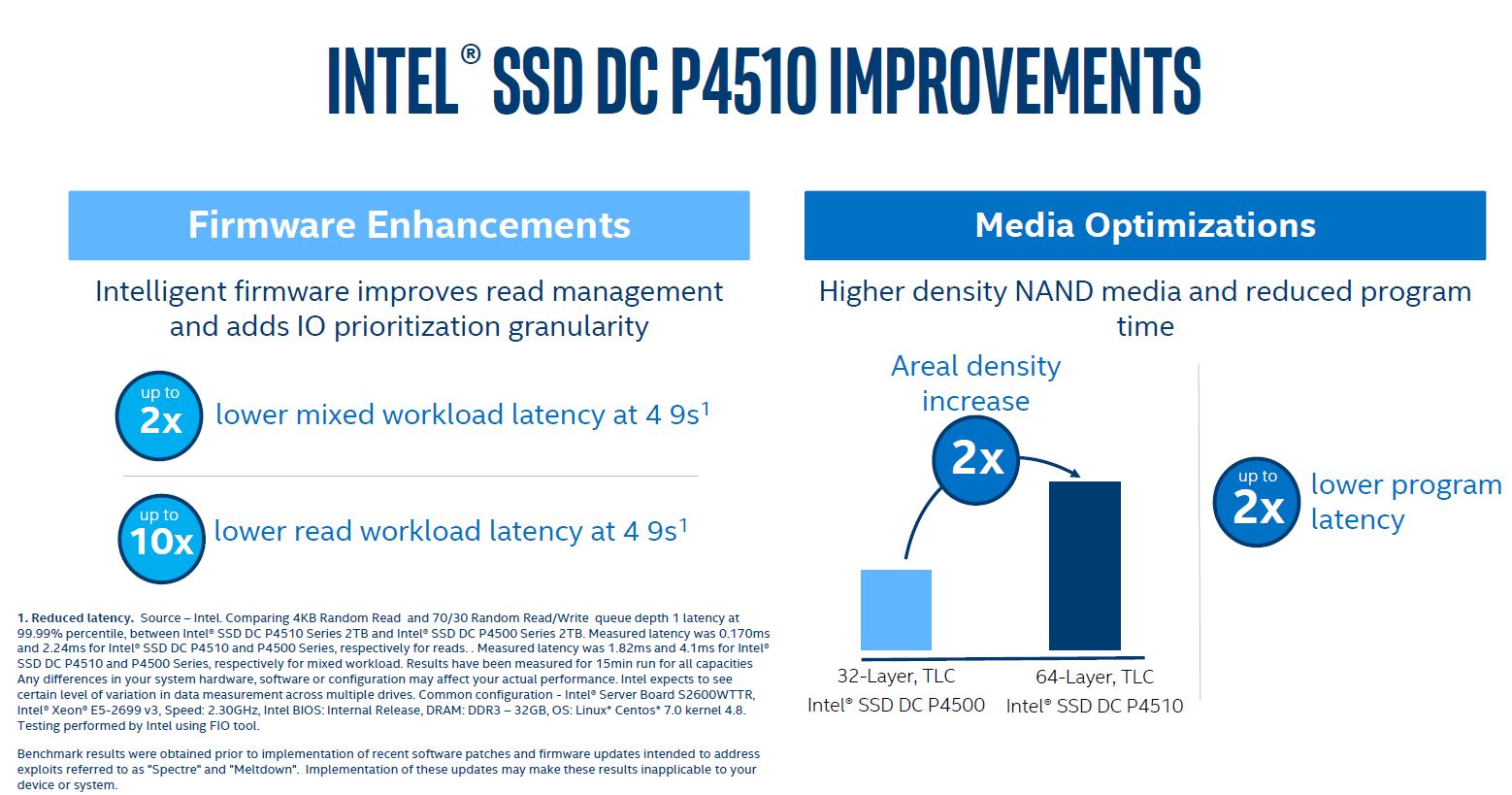
The net impact is that these drives perform better. We think that the firmware updates have been the most impactful changes as we are going to see in the performance section.
For specs, here is the relevant excerpt from the Intel DC P4510 and P4511 specs:
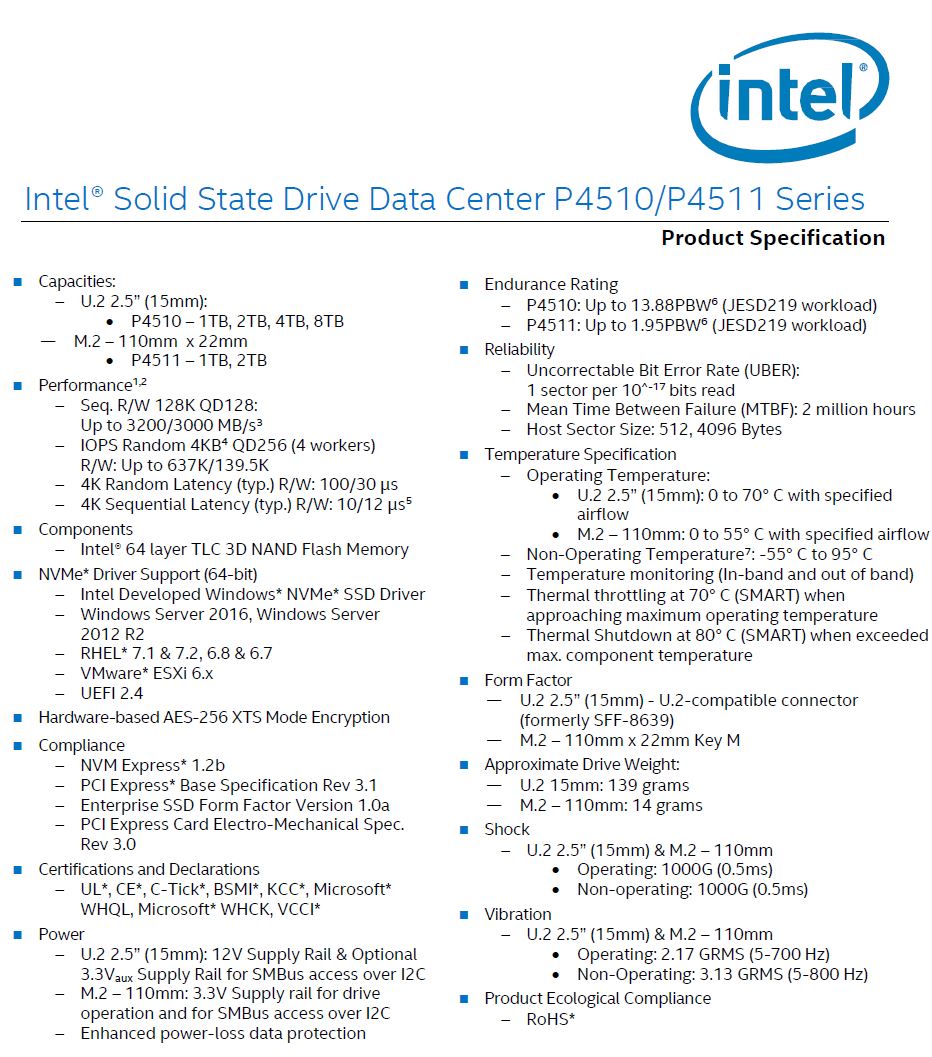
A bigger impact is the capacity side. By moving increasing the capacity by 4x (2TB to 8TB), one can use fewer drives to reach a given capacity, and therefore requires less power and space. There is another impact.
There is another major impact. As drive capacities increase, the need for multiples of drive writes per day decreases. Except for a few applications, the vast majority of storage patterns are write data once and read that same data many times. If you think about this, it makes sense. If you have an application like Microsoft SharePoint, or a local file server, data is meant to be stored there over time versus changed every day. When we had small drives, they often occupied a cache tier, but today, NVMe SSDs are large enough to be used as primary storage. If you have write-heavy operations, here is the deal: buy Intel Optane. If you need a NVMe capacity tier, this is a great option.
Next, we are going to look at some performance numbers to see just how well this performed.
Intel DC P4510 NVMe Series Performance
Intel’s non-volatile memory group does a good job publishing industry standard numbers, and there are many sites out there that have similar 4K RR/RW, 70/30 mixed, and sequential workloads. We are going to spend a bit of time addressing these and then focus to some higher-value application testing.
Intel DC P4510 Synthetic Testing
We fired up fio and wanted to show what the Intel DC P4510 2TB looks like in terms of synthetic performance. We are going to focus these results against a previous generation Intel DC P3700 which was a top of the line write optimized drive from the previous generation.
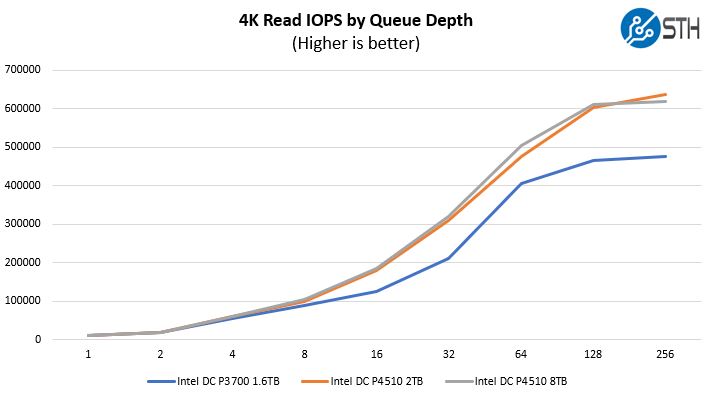
In terms of 4K random read IOPS, we can see that the new series is significantly faster than the previous generation. When we move to the write IOPS side, we can see that the P4510 is relatively competitive with the previous generation write optimized drives.
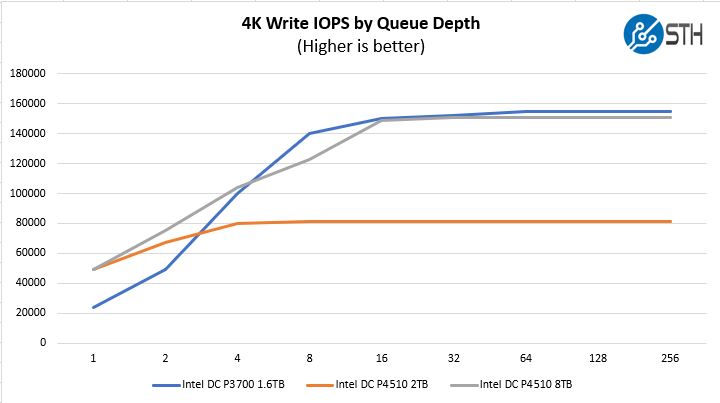
We see a similar pattern on sequential read speeds.
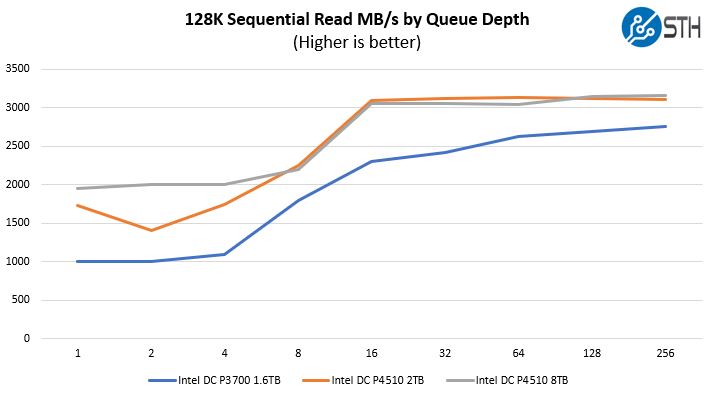
The write side is a similar story.
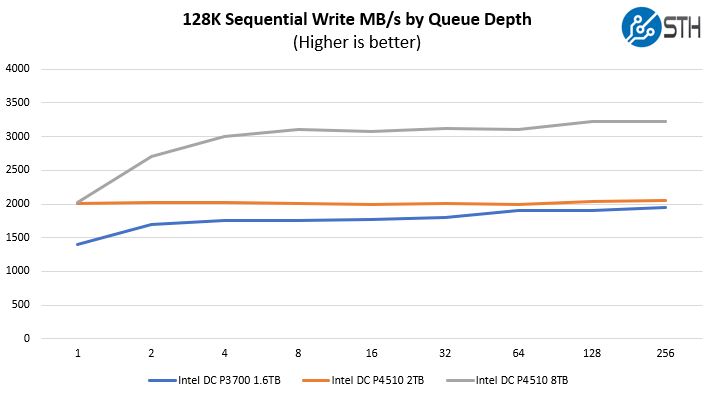
What is impressive here is just how well the drives perform compared to the previous generation top-of-the-line generation. Intel did a lot of work with their 64-Layer 3D NAND and their controllers to improve the Intel DC P4510 by such an impressive magnitude.

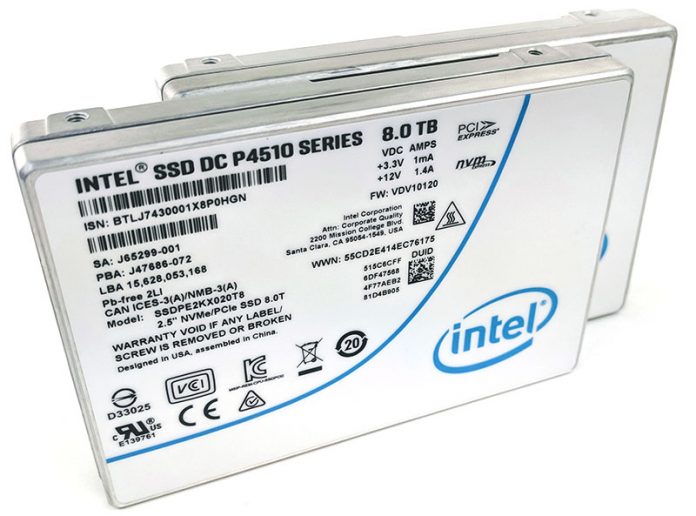


Cool adding EPYC and the non-x86. Let’s see. Qualcomm is vaporware. Ampere is new and not shipping. So that’s Cavium?
I like the NGINX CDN results. Those are really good.
8TB helps us since we can get 96TB per U using those. Cliff you could have done a better job saying why that’s important to conserve PCIe
Thank god ya’ll did something other than pages of iometer and fio results. That’s boring. Can you do more Ceph?
What about the fact that buying retail drives like these won’t work right in HPE servers because ProLiant’s throw errors when you’ve put in drives without HPE firmware? We bought a few hundred drives only to find this out the hard way.
@Rajib A
Buy Supermicro the next time….
Supply constraints for the P4511 force me to look for alternatives for M.2 boot for Supermicro server builds. What other vendors are suitable for Enterprise?